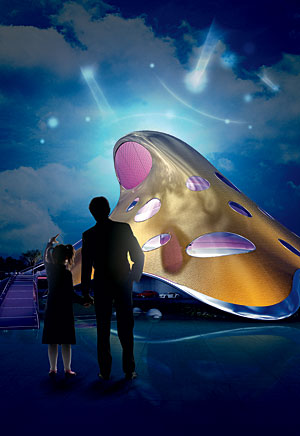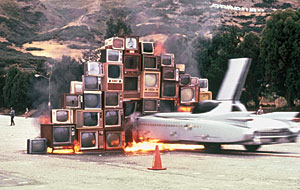A film festival highlights the proliferation of design documentaries.
For years, documentaries on architecture have appeared mainly on public broadcasting stations in the form of earnest presentations of buildings and their pioneering creators. Often they are too earnest. But a number of factors indicate vibrant growth and change. Perhaps the accessibility of video cameras allows more architecturally minded novices to turn from amateurs to auteurs. Add to that the proliferation of short trailers or film excerpts on YouTube and such online outlets, and architecture on film seems to be everywhere.


(Even RECORD’s Web site offers numerous short videos created by editors, plus excerpts from professional documentaries.)
In mid-October, the Architecture & Design Film Festival (ADFF) at New York City’s Tribeca Cinema helped bring this moment into focus. (RECORD was an ADFF media sponsor.) Kyle Bergman, AIA, the founder and festival director (with Laura Cardello), put on an out-of-town tryout last year in Whitefield, Vermont. Encouraged by the 1,000–person attendance, he brought it to where the density is thicker. Without much advance publicity in a hyperscheduled town, ADFF was able to attract 2,800 people to see more than 40 films in four days.
Bergman says his team selected documentaries of various lengths that combined a good design story with a strong human interest component. An ADFF survey determined that the highest–rated film was Citizen Architect: Samuel Mockbee and the Spirit of Rural Studio (2010), which includes an interview with the late architect. Other architectural biographies shown were Eye Over Prague (2010), about the late Jan Kaplicky’s battle to get his blobular New National Library in the Czech capital off the ground (still to be decided); Citizen Lambert: Joan of Architecture, a film about Phyllis Lambert with Citizen Kane conceits (2009); and Vincent Scully: An Art Historian among Architects (2010). Another film brought to life 1960s counterculture architects: Space, Land and Time: Underground Adventures with Ant Farm (2010). Strictly architectural films (especially short ones) offered intense and speedy ways to cover the subject, such as Kimbell Museum: Water and Sky (2010) or St. Louis Can Soar (2010), made by specialists in this genre of brevity, Spirit of Space.
If interest is high, money, not surprisingly, remains a major hurdle with making these documentaries, no matter what length. Grants offer the means for filmmakers and nonprofit organizations that produce them (such as Checkerboard Films or Design on Screen), as costs are rarely earned back.
And then there is TV. The syrupy banality of cable shows devoted to decorating houses leaves public television as the main source of financing for more substantive architecture productions. But it’s tough. Stephen Chung, a Boston architect, is putting together a 10-part “cool” architecture series he hopes will attract funding from the Corporation for Public Broadcasting and Public Broadcasting Service’s diversity and innovation initiative. Although he has teamed up with a producer, Idea Factory, he’s already spent a lot of his own money to make a test clip. And that is just to get selected for the pilot.



Post a comment to this article
Report Abusive Comment